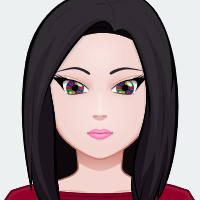I am now in the second week of Topic 1 of ONL212 (Online Participation and Digital Literacies). For our Topic 1 groupwork, my group has decided to explore the concept of a ‘digital classroom’.
Based on my online teaching experiences during this pandemic, it can be difficult to make everyone feel included and comfortable in an online environment. This is actually a pressing pedagogical question that goes beyond this pandemic. Sometime during our ONL group’s discussions this week, we talked about whether the digital classroom refers to only online spaces or also in-person meetings. In reality, we have all been teaching and learning in digital classrooms for a long time. During in-person seminars, students are checking emails, googling for information, and having online conversations with each other over WhatsApp and Messenger. How does one design a course that recognizes the realities of today’s digital classroom? And following that, what kinds of digital literacies are required of educators and learners in such digital classrooms? Recalling David White’s distinction between digital ‘residents’ and ‘visitors’, if I would like students to be ‘residents’ in our digital classroom—feel confident, at ease, and included—what kind of pedagogical approach, skills, and tools would I need?
Scientific studies show that in our mid-twenties, our brains start getting less agile and it gets ‘harder’ to learn new things, though it is precisely through the learning of new things that our brains keep healthy. So, while I often feel like a tech Neanderthal navigating this brave new digital world, I am telling myself that the learning of new digital literacies will keep my brain fit. So far, I have been intrigued by the digital tools and activities used during our ONL talks and group meetings: uploading hand-drawn charts on Padlet, brainstorming with my group members on Google’s Jamboard, and creating my own avatar (see below). For this week, we are supposed to do something with video, but I have not started on that yet.

Apart from motivating myself, another question of interest to me is the motivating of learners in a digital classroom. I found this post on student motivation by Ann S. Michaelsen (whose book I plan to purchase) particularly interesting. Studies show that learners are most motivated when they have relatedness, competence, and autonomy. How then should a course and digital classroom be designed to meet these psychological needs and facilitate motivation? There is also the need for educators and learners to equip themselves with the appropriate digital literacies. As David White and Alison Le Cornu recognise, “online literacies differ between platforms” and age is less influential than ideas of privacy and community when it comes to technology use. This means one cannot assume that one’s ‘younger’ students are aware of how a particular digital tool should be employed for learning purposes. For example, most university students have experience using social media (e.g. Facebook, Twitter, Instagram), but if social media is incorporated into the course as a learning platform, some guidelines and discussion may be needed to ensure that social media interventions are thoughtful (instead of reactive), constructive, and supportive rather than destructive of learning (e.g. no constant or obsessive checking and posting).
I must admit that engaging with the digital classroom can be slightly unnerving. In physical classes, one could arguably choose to ignore the digital conversations and activities of students floating around as one lectures in front of the class. Or one can view such digital realities as pedagogical opportunity and try to shape it to enhance student learning.
The last time I engaged in such motivational self-talk was when I fell in love with, and decided to learn, flamenco and classical Spanish dance. For me, learning these dance forms is like learning a completely new language, quite literally, as the letra is in Spanish and castanet-playing is, as my dance teacher/mentor Tania Goh (Spanish Dance Singapore) explains, an intricate musical vocabulary in itself. Being in the digital classroom also requires learning a new ‘language’. And perhaps the rich art form of flamenco yields another insight. The spontaneous and improvisational nature of flamenco means that the flamenco dancer is never ‘performing’ alone but communicating with the singer(s), musician(s), and audience. Each plays off the other, taking the lead at different times and also following in turn. No one is really the ‘star’. And perhaps that is the role of the educator in today’s digital university classroom, no longer as mere information provider or all-knowing ‘leader’, but as facilitator and fellow learner in the seeking and making of knowledge, responding to the ongoing conversations and evolving interests of students. One of the questions we have been asked to reflect on these two weeks is our digital identity. While the analogy is not perfect, I have decided that I will aim to be Carmen Amaya (see below) in my digital classroom.